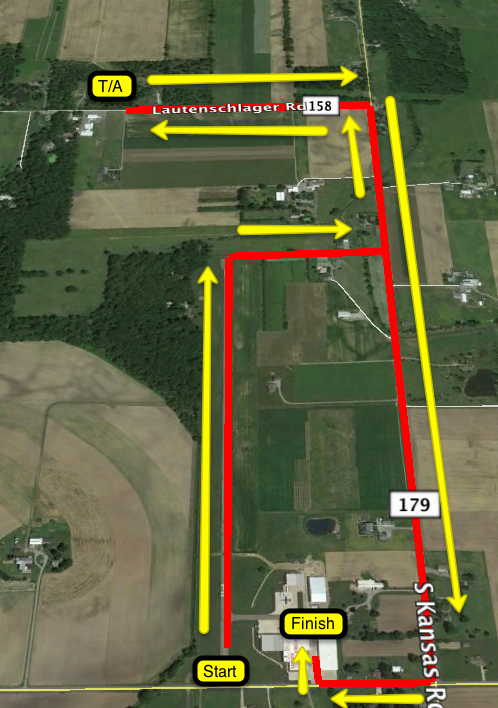Jim’s course route seems very straight forward to measure, mark and certify. My recommendation to measure this course would be using the whole road from curb to curb. Use the SPR for the entire course. The issue of a restricted course is a race director’s nightmare to enforce. The center line of a road is NOT an enforceable restriction unless the event is willing to invest in traffic cones and barriers along with official course monitors. Runners will and do run wherever they are allowed to run irrespective to traffic cones or even police screaming at them to run within the controlled lane. Restricted courses are a nightmare to document for the course map, especially right to left turns.
I'm in agreement with Bob, Jim G. and Duane.
The USATF Rule Book makes it clear; Rule 240 Course Certification, 2. Definition of course:
(a) Path: A running course shall be defined as the streets, roads, paths, marked paths on grass, gravel or dirt, and/or paths using established permanent landmarks or benchmarks which is intended as the runner’s path for any type of race; and
(b) Shortest possible route: The measured running course shall involve the course noted above and the measurement shall follow the runner’s shortest possible legal
Further; Rule 243 COURSE MARKING AND MONITORING, 1. Running courses shall be adequately marked at strategic points to keep the competitors on course. (a) Each turn and intersection shall be clearly marked in such a way that there will be no doubt as to the direction the runner should go to stay on course. (c) The measurement line should be marked along the course in a distinctive color that cannot be mistaken for other markings.
2. Turns and major intersections on the course shall be monitored. (a) Monitors shall always be standing and shall be located at or before the change of direction, not after it occurs on the course.(b) Scorers shall keep a record of the runners and their running times at specific points on the course. (c) Whenever possible, the route of the competition should be free of vehicular traffic or nearly so. All dangerous intersections should be staffed to provide for traffic and spectator control.
4. Any competitor who has been found by the Referee and/or Jury of Appeal to have gained an unfair advantage by intentionally shortening the route of the race ("cutting the course") shall be immediately disqualified from the competition. See also Rule 163.6.

